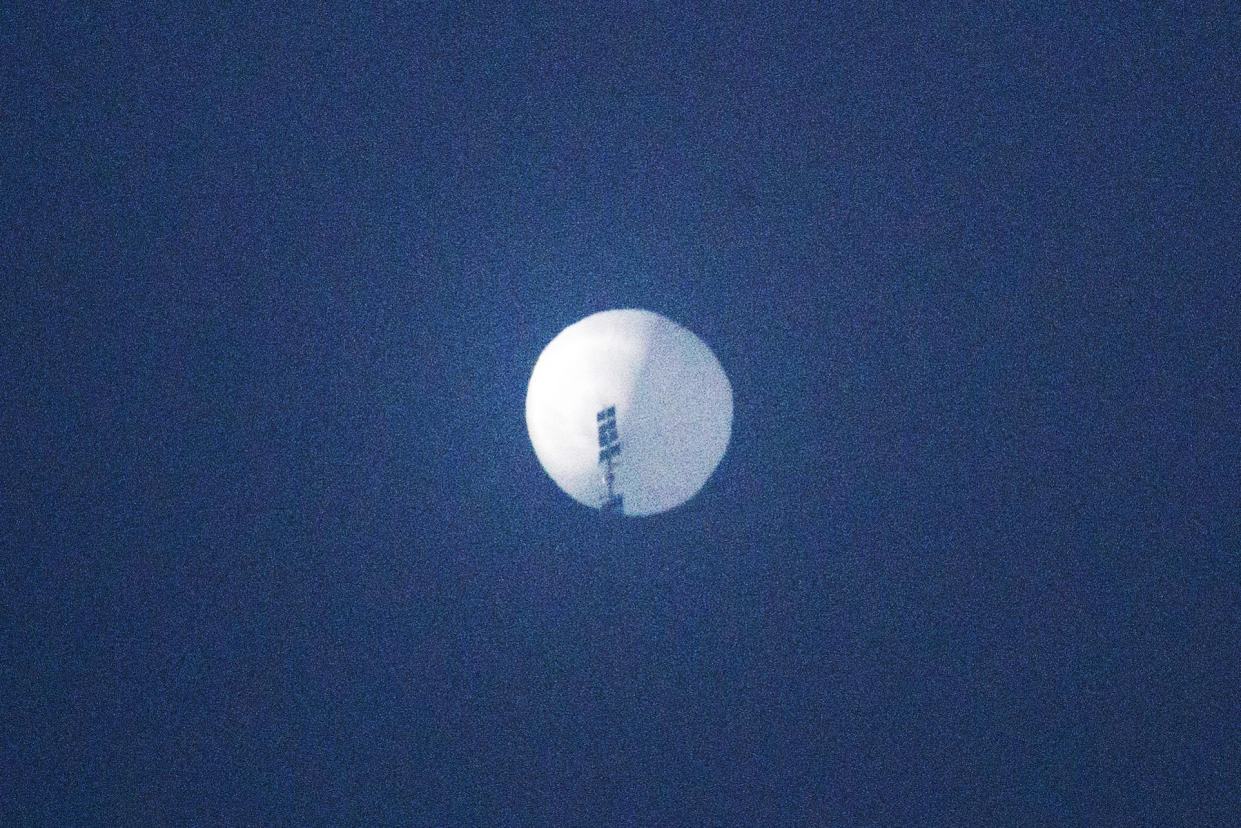Defense officials defend response to Chinese spy balloon in tense Senate hearing
WASHINGTON — Tensions flared during a Senate hearing on the Chinese spy balloon Thursday as lawmakers in both parties expressed anger and frustration over the Biden administration’s handling of the incursion into U.S. airspace.
Sen. Jon Tester, D-Mont., became visibly angry as he questioned senior Defense officials defending the administration's response before a Senate subcommittee.
“Do we have a plan for the next time that happens and how we’re going to deal with it?” Tester, the subcommittee chair, asked the officials. “Because quite frankly I’ll just tell you, I don’t want a damn balloon going across the United States.”
Tester also asked why the military did not shoot down previous Chinese balloons that flew into U.S. airspace.
“So the real question here is, if we had an incursion before and we shot this one down when it hits water, why didn’t we shoot the previous ones down and gather intelligence from those?” Tester said.

A senior State Department official said earlier Thursday that the Chinese balloon that flew above the U.S. for eight days included “multiple antennas” capable of collecting signals intelligence, and that the balloon maker has proven ties to the Chinese military.
Administration officials have said there have been at least four previous Chinese spy balloon flights over the U.S., three during the Trump administration and one during the Biden administration. In some cases, the flights were determined to be Chinese balloons after the fact, according to the Pentagon.
At the hearing, Sen. Lisa Murkowski, R-Alaska, said she was furious that the military opted to allow the balloon to fly over her state, and that they only saw it as a heightened threat once it flew over Montana.
“As an Alaskan, I am so angry. I want to use other words, but I’m not going to,” she said. “The fact of the matter is, Alaska is the first line of defense for America, right? If you’re going to have Russia coming at you, if you’re going to have China coming at you, we know exactly how they come.”
But Army Lt. Gen. Douglas Sims, director of operations for the Joint Staff, said the balloon did not fly over sensitive sites in Alaska, and defended how the head of U.S. forces in North America, Gen. Glen VanHerck, responded to the airship.
“We think before we shoot and in this case, we thought before we shot,” Sims told the senators.
The military detected the Chinese balloon on radar as it approached Alaska, and there was a decision that the balloon was “not a threat to U.S. citizens or aviation traffic,” and that it did not have the ability to “conduct significant intelligence collection,” Sims said. The balloon then flew over Canada before heading into the U.S. toward Montana and nearby states, raising the potential threat and prompting President Joe Biden to ask for military options, the general said.
“The assessment for potential intel risks to sensitive critical us sites in the Upper Midwest increased and the president asked for kinetic courses of action,” Sims said.
As the administration weighed its response, officials concluded that the danger to civilians on the ground if the balloon was shot down was greater than the risk represented by the balloon’s spying capacity.
“In determining potential options, the risk of Chinese intelligence collection was deemed to be low to moderate while the rest to U.S. personnel on the ground was assessed at moderate to significant,” given the anticipated debris from the large balloon if it was shot down over land, according to Sims.
He said he understood “the unsettling feeling” that Americans had over the intrusion into U.S. airspace but he said Gen. VanHerck’s decisions “were in the best interest of the United States and our citizens, as were the decisions of our senior leadership.”
Sims and other senior officials testifying at the hearing said they would offer more detailed answers to lawmakers in a closed session later.
Murkowski said she already received a classified briefing from officials, calling it “thorough,” but argued the public needed to learn more.
“I think that the American public deserve more than they have seen in terms of transparency. About why this spy balloon was allowed to spend two days over our waters and over the state of Alaska. The state that is the guardian for everybody else,” she said.
Also on Thursday, the House unanimously passed a resolution condemning China’s use of the surveillance balloon over the United States, calling it a “brazen violation of United States sovereignty.”
The resolution, which passed 419-0, also calls on the Biden administration to continue to keep Congress informed on the incident.
The full House has received a classified briefing on the balloon issue, with senators expected to receive a briefing, as well.
